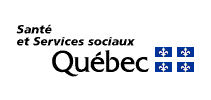Radon
Radon Awareness on JBCCS (Cree and English)
A house appears. The words “What is Radon?” are visible on the side of the house.
Narrator: What is radon? Radon is an invisible radioactive gas that comes from the ground and is in every home in Canada.
The camera moves to reveal the interior of the house, zooming in on the furnace room and the family room in the basement. Vapour representing radon drifts up from the basement to the main floor of the house, gradually making its way to the second floor bedroom where a baby bassinet is visible.
Narrator: It can be dangerous. It’s the number one cause of lung cancer in non-smokers.
On the bedroom wall is a picture frame. Inside the frame text appears which says:
“Radon is the #1 cause of lung cancer”.
Narrator: You can’t smell, taste or see radon.
The camera moves back down to a basement family room where the vapours representing radon are still visible.
Narrator: But it is easy to test for…
A radon detector appears on screen and moves to a shelf in the family room.
Narrator: …and easy to reduce to safe levels.
A ventilation pipe appears in the furnace room showing how radon gas is pumped from under the concrete floor of the basement to outside the house.
Narrator: Protect your family from preventable lung cancer.
The exterior wall of the house re-appears. The words “Take Action on Radon” appear on the side of the house. Outside the house, there is a little girl skipping and a boy is sitting on the grass with his dog.
Narrator: Test your home today. Visit Canada.ca/radon
Text on Screen: Canada.ca/radon
A message from Health Canada and the Government of Canada.
Radon is an invisible gas that comes from uranium (a natural chemical element in the Earth’s crust) and goes into the air. When it is contained in a mine, or in the foundation of a building, it can be present in high levels that are dangerous to our health.
Radon is:
- A radioactive gas found naturally in the environment
- Colorless
- Odorless (there is no smell)
- It seeps into buildings from the ground

Did you know?
Radon is heavier than air. It can enter buildings and homes through the bedrock and cracks in the foundation. It gathers in the lower rooms and where there is less ventilation (like a basement).
WHERE DOES RADON COME FROM?
Radon comes from the breakdown of uranium – a natural, chemical element. Some soil and rocks contain more uranium, so there will be more radon coming from the ground in these areas.
Radon levels differ depending on:
- Geography
- The type of soil
- The type of construction (if a house has a crawl space or not)
- Season
- Weather (temperature, wind, etc.)
HOW DOES RADON AFFECT OUR HEALTH?
- Radon exposure increases the risk of lung cancer
- Radon is estimated to cause about 10% of all lung cancers
- The risk of lung cancer increases with:
- Longer exposure (like living in a basement with high radon for many years)
- Higher concentrations (like living in a basement with very high radon),
- Radon exposure and smoking combined
There is no medical test to know if you have been exposed.
In the general population, Radon is:
- the number 1 cause of lung cancer in non-smokers
- the number 2 cause of lung cancer in smokers
Radon + tobacco = significantly increased risk of lung cancer
Lowering our exposure to radon helps to lower our risk of lung cancer.
HOW CAN WE LOWER OUR RISK?
Contact the Housing Department at your local band council office about testing in your community, or if you need repairs after radon has been found.
- Private homeowners can test their homes with a radon test kit. You can buy a test online from Take Action on Radon website.
- If there are high radon levels (200 Becquerels/m3 or higher), there are repairs and interventions possible. A radon mitigation specialist can help you out.
- If you live in social housing that are owned by the band council, they are responsible for knowing the levels of radon and will need to help repair homes if there is a large amount of radon in the area
Questions?



